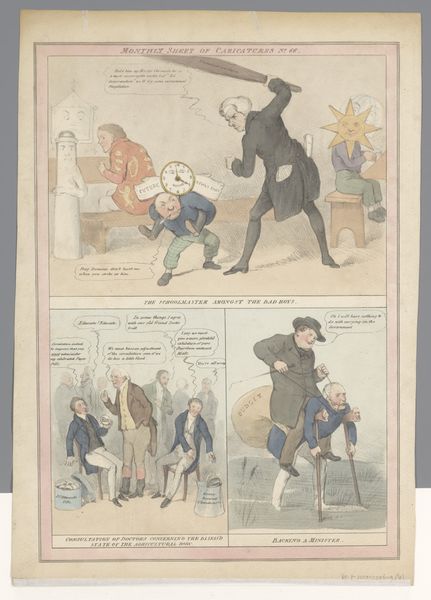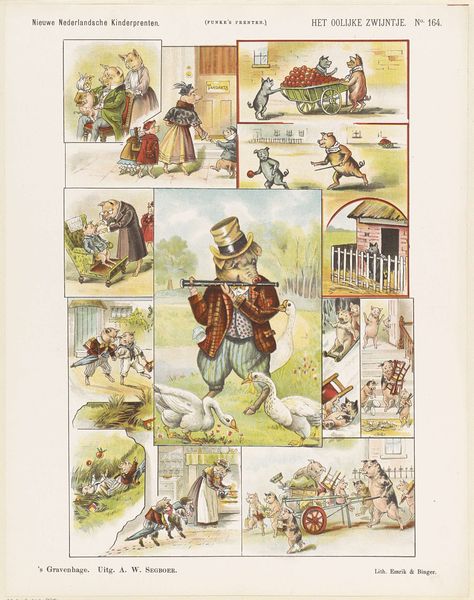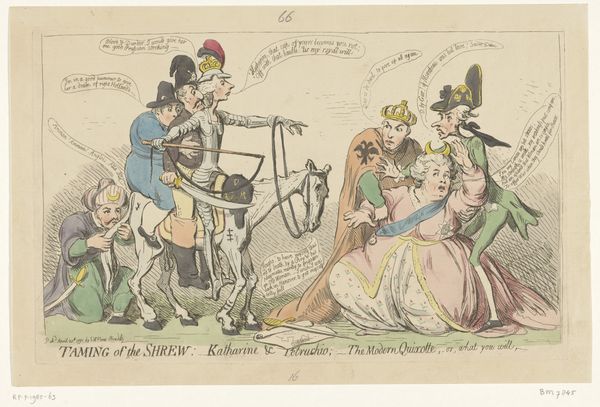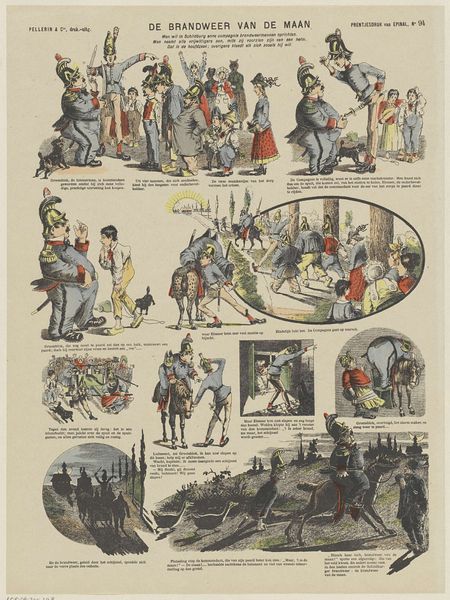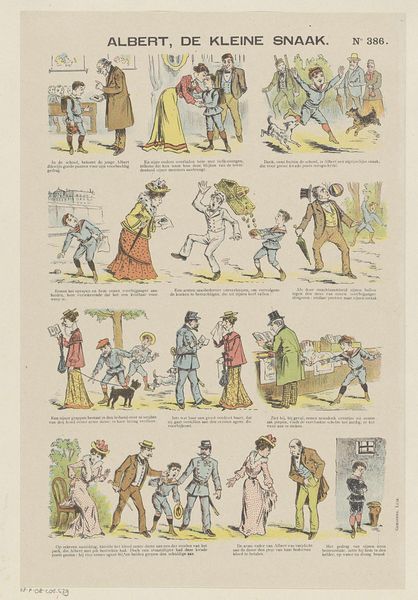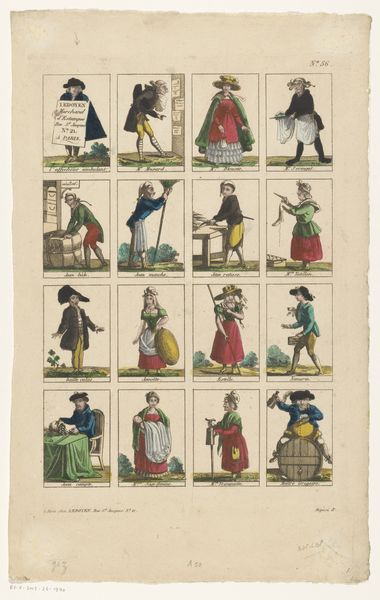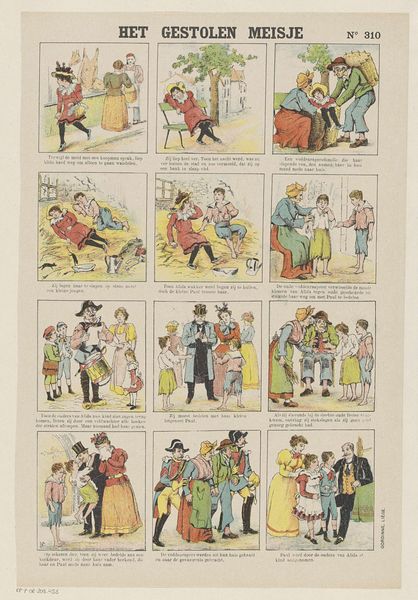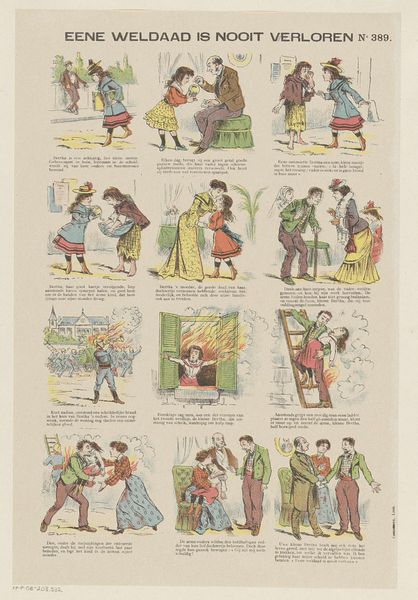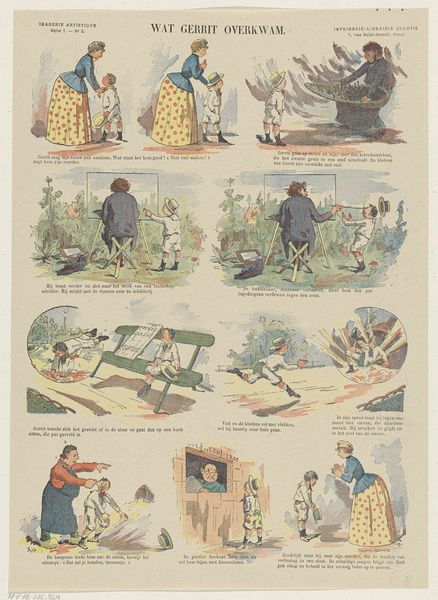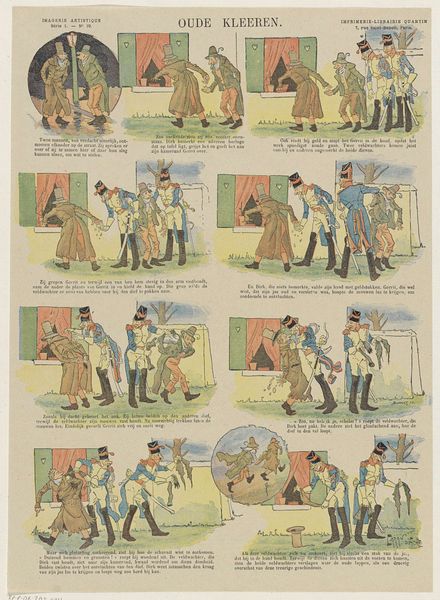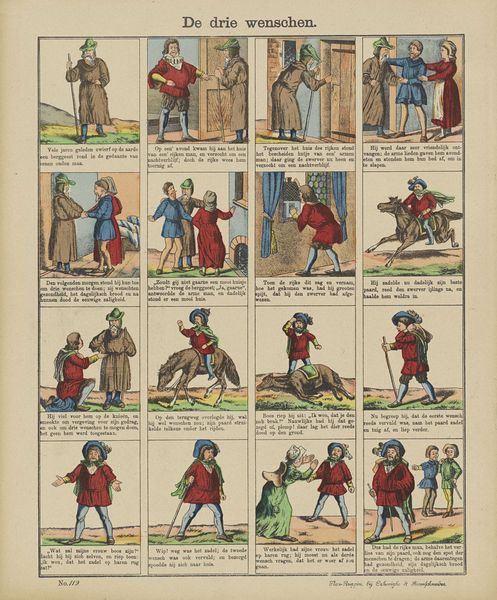
lithograph, print
#
narrative illustration
#
narrative-art
#
lithograph
# print
#
caricature
#
romanticism
#
watercolour illustration
#
genre-painting
Dimensions: height 386 mm, width 262 mm
Copyright: Rijks Museum: Open Domain
Editor: This is "Zeven karikaturale scènes," a lithograph print created in 1832 by Robert Seymour. It's composed of seven different caricature scenes in a grid format. What stands out to me is the overt satire of Romanticism and its critique of contemporary social mores. What do you see in this piece? Curator: I see a powerful condensation of societal anxieties and pretensions, made visible through a cluster of recurring symbolic figures. The foppish dandy, the gluttonous nobleman, the ineffectual politician - these weren't just random faces, but recognisable *types* in British society, acting as vessels of popular disapproval. Do you notice how each scene uses exaggerated posture and costume to communicate its specific point? Editor: Yes, it's like each scene tells its own biting little story. I guess I'm curious, beyond just comedic effect, what's the lasting impact of making fun of something so directly? Curator: It’s about dismantling power structures, one chuckle at a time. The potent effect of visual satire is how it embeds itself in collective memory, shaping future perceptions of those very symbols. Notice, for instance, how Seymour depicts "Parliamentary Probability." The image isn't just about *those* politicians; it establishes a *visual vocabulary* for political ineptitude that echoes through later imagery. Editor: So it creates a visual language that reinforces cultural values. I guess I never really considered the long-term effects of these early satirical images. Curator: Exactly. Think of them as viral memes from the 19th century; instantly accessible and culturally infectious, shaping collective attitudes long after the immediate target fades from view. They leave an enduring symbolic fingerprint on our understanding of society and its figures of authority. Editor: That really changes how I see these caricatures now. They’re not just funny; they're culturally formative. Thanks for sharing that. Curator: It’s my pleasure. By understanding the emotional weight that images carry over time, we begin to understand ourselves.
Comments
No comments
Be the first to comment and join the conversation on the ultimate creative platform.
